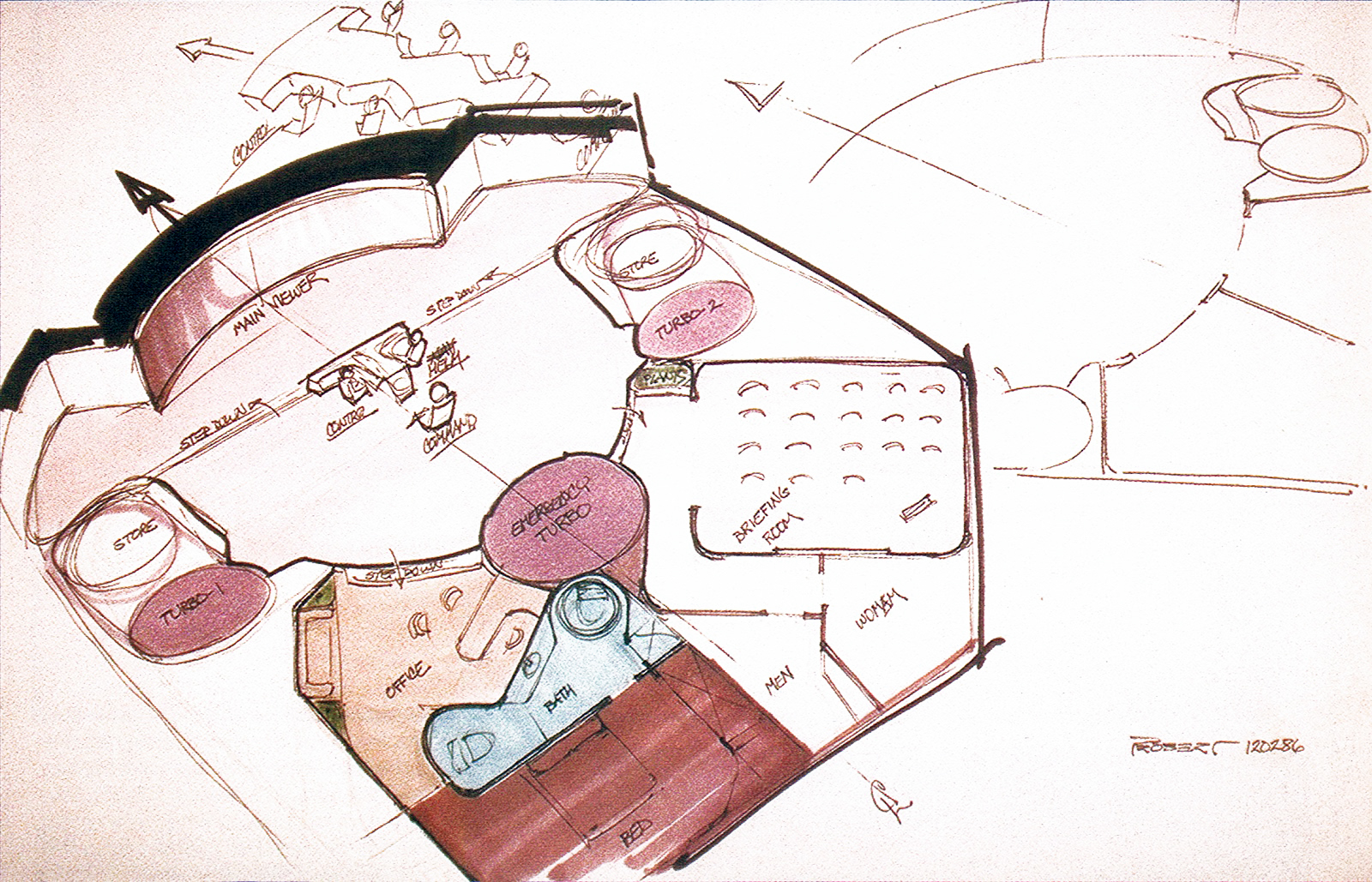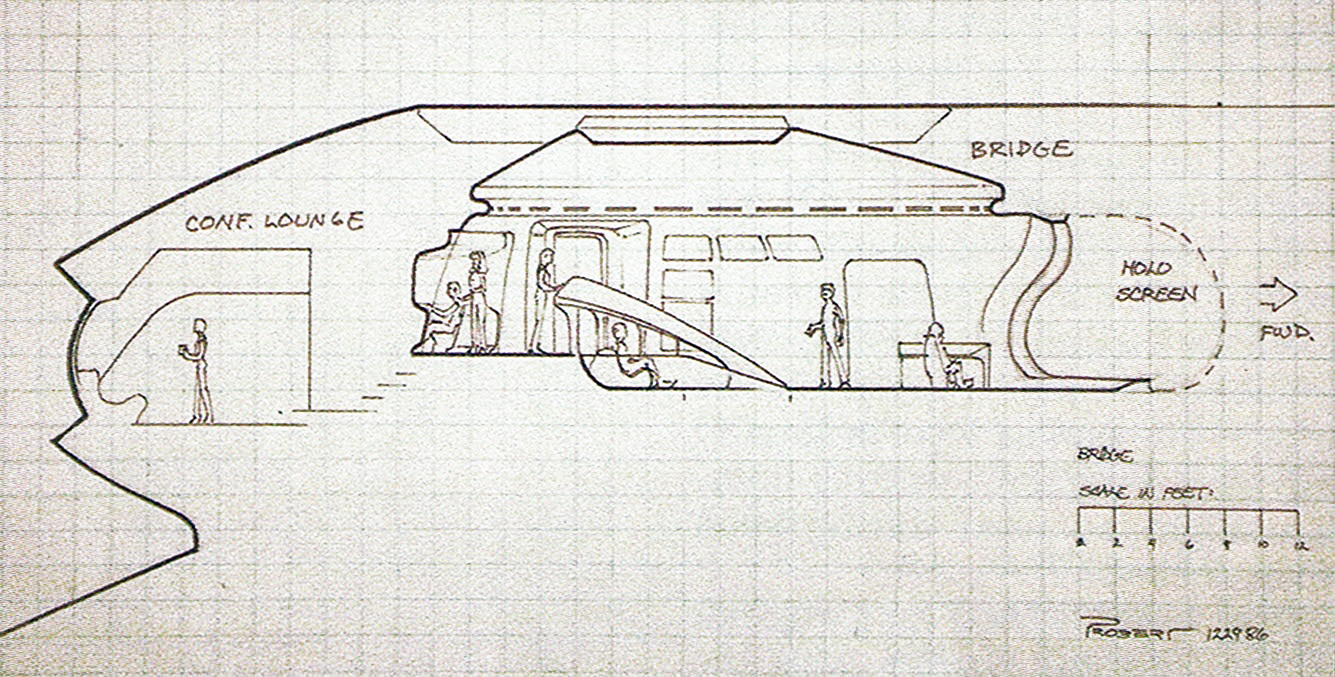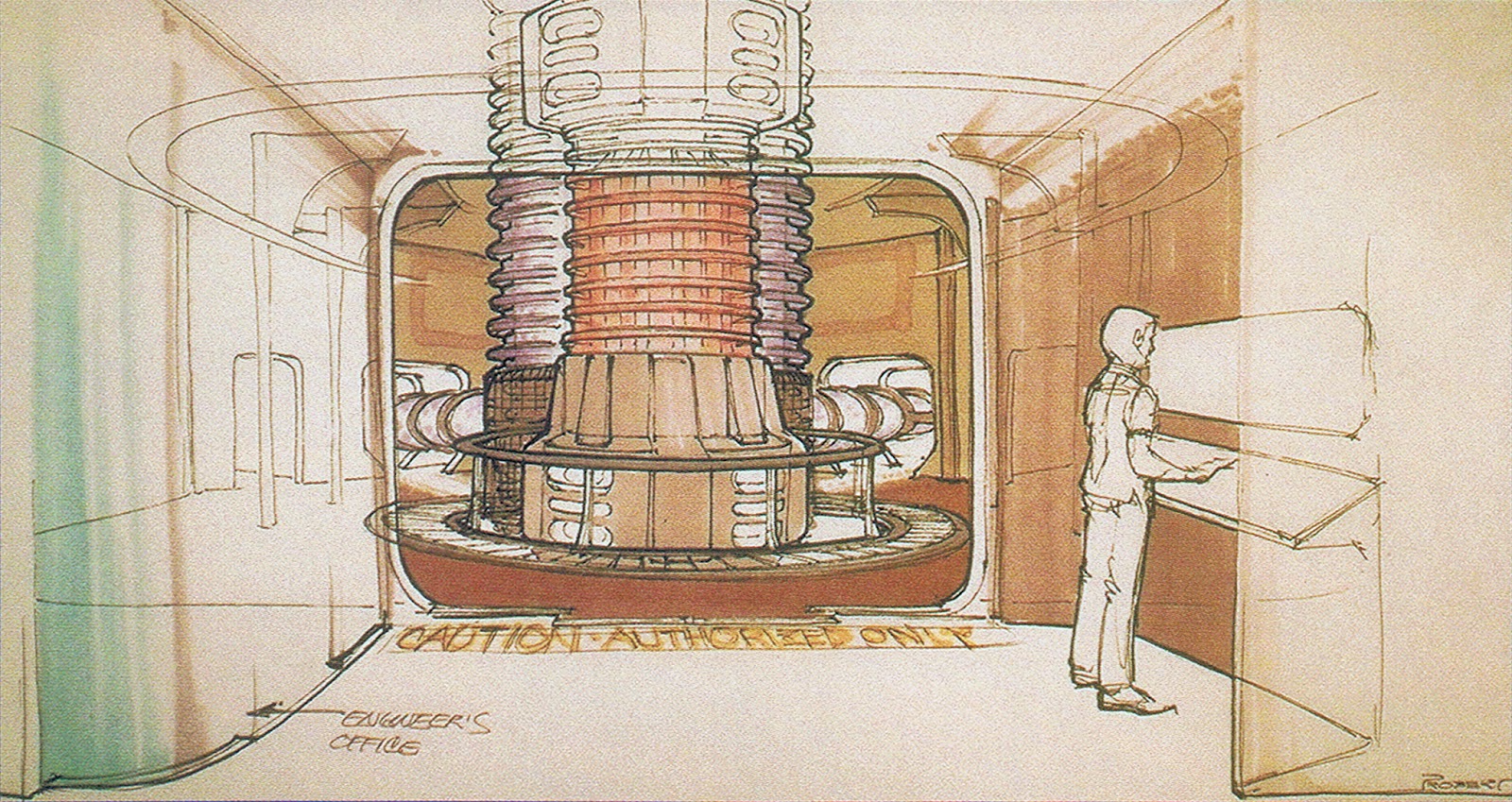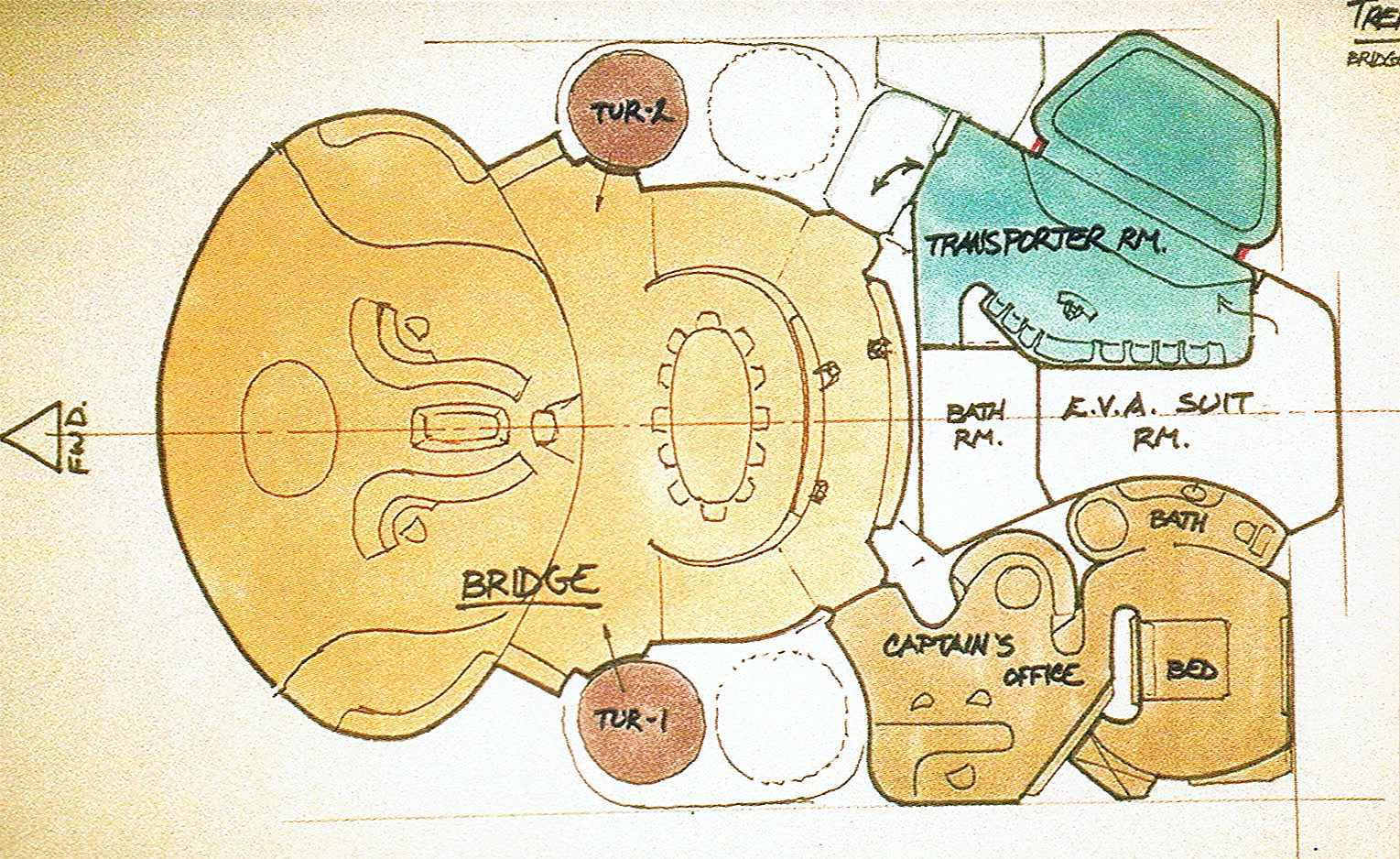-
Welcome! The TrekBBS is the number one place to chat about Star Trek with like-minded fans.
If you are not already a member then please register an account and join in the discussion!
You are using an out of date browser. It may not display this or other websites correctly.
You should upgrade or use an alternative browser.
You should upgrade or use an alternative browser.
Forgotten Trek
- Thread starter Ottens
- Start date
I added a few more concept arts to my article about it in recent months, courtesy of Humanoid History.
Later in The Enterprise Incident, the improved cloaking device caused a great concern in Starfleet Intelligence, even willing to sacrifice the Enterprise to get one. The Romulan D7 (I wouldn't characterize "stripped-down, bare-bones") and the Enterprise "easily" cloaked.Generally, cloaking has only been shown to be effective with stripped-down, bare-bones combat vessels that minimize power usage that could leak through the cloak, like Romulan and Klingon Birds-of-Prey and the Defiant. Basically submarine-like vessels, in keeping with how their debut episode, "Balance of Terror," was a pastiche of the sub-warfare movie The Enemy Below.
SPOCK: The cloaking device is working perfectly, and the commander has informed me that even the Romulan sensors cannot track a vessel so equipped.
Later in The Enterprise Incident, the improved cloaking device caused a great concern in Starfleet Intelligence, even willing to sacrifice the Enterprise to get one.
Which doesn't mean they intended to use the tech themselves; it could simply mean that they needed to study the device so that they could determine a means of penetrating a cloak and preventing Romulan sneak attacks. There's always an arms race between stealth and detection.
Really, if you think about it, Spock's claim that the Romulans couldn't track their own cloaking technology is ridiculous, something the writers didn't think through. Of course they should be able to penetrate it; they invented it. At most, they might not quite have figured out a way yet, but surely they would sooner or later. And at that point, there'd be no advantage to Starfleet in using it. Just as there'd be no advantage to the Romulans in using it if Starfleet figured out how to penetrate it.
Trek fans tend to assume that cloaking is a single technology, but that doesn't fit what we've seen -- multiple iterations of cloaks being treated as a new invention, and of detection methods being developed and then vanishing. In "Balance of Terror," motion sensors could penetrate cloaks, but in "Incident," they couldn't anymore. In ST III, you could see a cloaked ship through its visual distortion, but never again later on. In ST VI, they found a way to detect cloaked ships through their engine emissions, but by TNG, no such tech existed. And then there's the DS9 Mirror Universe, where "The Emperor's New Cloak" claimed that Mirror Klingons had no cloaking tech even though we'd seen their ships decloak in "Crossover."
The simplest way to reconcile those inconsistencies is merely to recognize that any given cloaking technology would be rendered obsolete as soon as a way to penetrate it was found, requiring the invention of a whole new form of cloaking. So cloaking isn't one technology, but a succession of different ones, each of which has a limited shelf life. So to maintain cloaking as a viable technology on a continuing basis requires dumping a lot of your military R&D budget into stealth research on a continuing basis, which has got to be a drain on resources. It's something you'd consider worth doing if you're a paranoid, warlike culture, or if your government is in the pocket of the defense contractors that specialize in cloaking, but I think the Federation wouldn't see the value of wasting so much effort on it when there are more constructive things to pursue.
The Romulan D7 (I wouldn't characterize "stripped-down, bare-bones") and the Enterprise "easily" cloaked.
I never said it was impossible, just that it wasn't something practical to use on a typical Starfleet vessel on a regular basis. The way it's generally been portrayed, certainly in DS9 with the Defiant, is that you need to minimize power usage when cloaked, for what should be a self-evident reason: the more power you're generating, the harder it is to hide its signature, so the more power you need to put into cloaking, which rapidly reaches a point of diminishing returns. That's just common sense.
Obviously the makers of "Incident" didn't intend it that way, but in retrospect, we need an explanation for why Starfleet didn't keep using the technology afterward. I think this is the most plausible explanation.
@Unicron, of course you're right, every one of those examples has more context. Some "insane" admirals may be more insane than others. In most cases we're simply talking about cases of poor judgement.
But there is a pattern of poor judgement, which I think calls into question the wisdom of trusting individual Starfleet captains and admirals to make decisions that should probably be left to diplomats and politicians. Or at least be group decisions.
That's fair.
 Sometimes of course characters will act because the plot requires it, like Admiral Haftel wanting to remove Lal somewhat arbitrarily in "The Offspring." There are some unused lines of dialogue in the script that would have given him a broader context for that, had they been filmed.
Sometimes of course characters will act because the plot requires it, like Admiral Haftel wanting to remove Lal somewhat arbitrarily in "The Offspring." There are some unused lines of dialogue in the script that would have given him a broader context for that, had they been filmed.He often gets included as an "insane" admiral, but I disagree. He was heartless, at least at first, and I think he was wrong to think scientists - even the best in the Federation - could have raised Lal better than Data. But he also had a fair argument, which is that it was risky putting two unique lifeforms together on the same starship.
The extended dialogue in Picard's ready room, had it been filmed, would have made a nice addition IMO. During that conversation, Haftel brings up the M-5 debacle and how it occurred partly because Dr. Daystrom wanted to supervise all major work on the M-5 himself, often in effective isolation (a phrase Haftel uses with less of this context in the final version). Daystrom's instability is clearly another factor, but Starfleet's concern has to do with the possibility that Lal could malfunction dangerously, even under careful supervision, and there's already one such Soong android (Lore) who has that problem even though he's not mentioned. 

You can read those scenes here, and there are several other TNG/DS9 scripts that have similar extended scenes.  The other extension for "The Offspring", in both the ready room and Data's lab, is Picard pointing out that the Enterprise crew is uniquely qualified to judge "normal" behavior for Soong type androids because of their familiarity with Data - a level of experience that a group of Starfleet researchers wouldn't benefit from.
The other extension for "The Offspring", in both the ready room and Data's lab, is Picard pointing out that the Enterprise crew is uniquely qualified to judge "normal" behavior for Soong type androids because of their familiarity with Data - a level of experience that a group of Starfleet researchers wouldn't benefit from.
Interestingly, there's also an earlier version of "Loud as a Whisper" where several scenes from the final version are missing, and Geordi has a much larger role in place of the emphasis on the relationship between Troi and Riva.
 The other extension for "The Offspring", in both the ready room and Data's lab, is Picard pointing out that the Enterprise crew is uniquely qualified to judge "normal" behavior for Soong type androids because of their familiarity with Data - a level of experience that a group of Starfleet researchers wouldn't benefit from.
The other extension for "The Offspring", in both the ready room and Data's lab, is Picard pointing out that the Enterprise crew is uniquely qualified to judge "normal" behavior for Soong type androids because of their familiarity with Data - a level of experience that a group of Starfleet researchers wouldn't benefit from.Interestingly, there's also an earlier version of "Loud as a Whisper" where several scenes from the final version are missing, and Geordi has a much larger role in place of the emphasis on the relationship between Troi and Riva.
Added a few more concept arts to Designing the Next Generation Bridge:


And to Designing The Next Generation's Engineering:


All by Andrew Probert, courtesy of Guia de Naves Estelares.


And to Designing The Next Generation's Engineering:


All by Andrew Probert, courtesy of Guia de Naves Estelares.
Finally, not only bathrooms but both a men's and women's bathroom! I've been holding it for 55.5 years!

Interesting that Probert drew the briefing room more like a small auditorium or classroom than the usual around-the-table setup. And it was a nice idea to have a small bedroom and bath adjoining the ready room -- I guess if there were a long shift where the captain needed to be on hand right away in case things went down but had time to take a nap in the interim, or something.
I assume by the 24th century all restrooms are unisex 
Probert's early drawings indeed show the briefing room as a classroom-like auditorium. He also toyed with attached a transporter room directly to the bridge, as you can see this in floor plan:

I'm speculating, but I'm guessing in the beginning they didn't have a plan for the briefing room at all yet. Designing the bridge was Probert's first job for TNG.
It seems to have taken about a month to arrive at the final configuration. The early-Dec 1986 plans have the classroom-like briefing room. By late December, we get that cutaway with the "conf. lounge" behind the bridge and a few steps down from it.

Probert's early drawings indeed show the briefing room as a classroom-like auditorium. He also toyed with attached a transporter room directly to the bridge, as you can see this in floor plan:

I'm speculating, but I'm guessing in the beginning they didn't have a plan for the briefing room at all yet. Designing the bridge was Probert's first job for TNG.
It seems to have taken about a month to arrive at the final configuration. The early-Dec 1986 plans have the classroom-like briefing room. By late December, we get that cutaway with the "conf. lounge" behind the bridge and a few steps down from it.
Updated Designing the Enterprise-D's Lounge Areas with more info about the design of the observation lounge and an overview of the various social spaces that were seen in Season 1.
Updated Designing the Enterprise-D's Lounge Areas with more info about the design of the observation lounge and an overview of the various social spaces that were seen in Season 1.
I liked how season one showed us more of these lounges throughout the ship. But once 10-Forward was built these went completely away.
Added a few more concept arts to Designing the Next Generation Bridge:


And to Designing The Next Generation's Engineering:


All by Andrew Probert, courtesy of Guia de Naves Estelares.
And thank you for the shout out and link to the "Word of God" comic by @Mark 2000 and I!
Last edited:
I liked how season one showed us more of these lounges throughout the ship. But once 10-Forward was built these went completely away.
I agree, although to be fair Ten Forward was a much nicer set than the various ad-hoc lounges they made during Season 1. For variety, though, I think they should have still occasionally shown others. Starting in Season 2, you get the impression there's only one social space on board the entire ship!
And thank you for the shout out and link to the "Word of God" comic by @Mark 2000 and I!
You are quite welcome! I was thrilled to see you guys used that early Probert design in your comic, which I always felt was more appropriate size-wise than the bridge we got in the show. (Although I liked that one too.)
I also loved your visualization of the huge arboretum, which I included in The Unseen Enterprise-D. I know yours was for an Ambassador-class ship, but I like to imagine the Galaxy class has a similar large arboretum in the back of the saucer section.
I
I also loved your visualization of the huge arboretum, which I included in The Unseen Enterprise-D. I know yours was for an Ambassador-class ship, but I like to imagine the Galaxy class has a similar large arboretum in the back of the saucer section.
Yeah Mark wanted to show more public space and I had the idea that what if Riker walked into a parkland space in the middle of the ship to find Data instead of the holodeck.
The TNG Blueprints box set identifies the two rectangular window arrays between the main shuttlebay and the saucer separation line as the arboretum windows on the exterior dorsal view, but fails to depict the arboretum at the corresponding place on the interior blueprints (apparently deck 7), showing it as just a generic storage area.
The arrangement of the different parts of the warp core and the shape of the concentric rings (and interestingly, you can still see the finned shape of the TMP warp core behind it) looks like it might have been an influence for the engine rooms of the Defiant and especially the Enterprise-E. Very cool concept.
Enterprise bridge concept art by Ralph McQuarrie (Humanoid History)I added a few more concept arts to my article about it in recent months, courtesy of Humanoid History.
Nope. Ken Adam. Compare it to the other images by Adam.
This uncredited image is McQuarrie.
Similar threads
- Replies
- 42
- Views
- 897
- Replies
- 15
- Views
- 354
Contest: ENTER
April 2025 Art Challenge - Suggest Your Themes!
- Replies
- 2
- Views
- 558
If you are not already a member then please register an account and join in the discussion!
